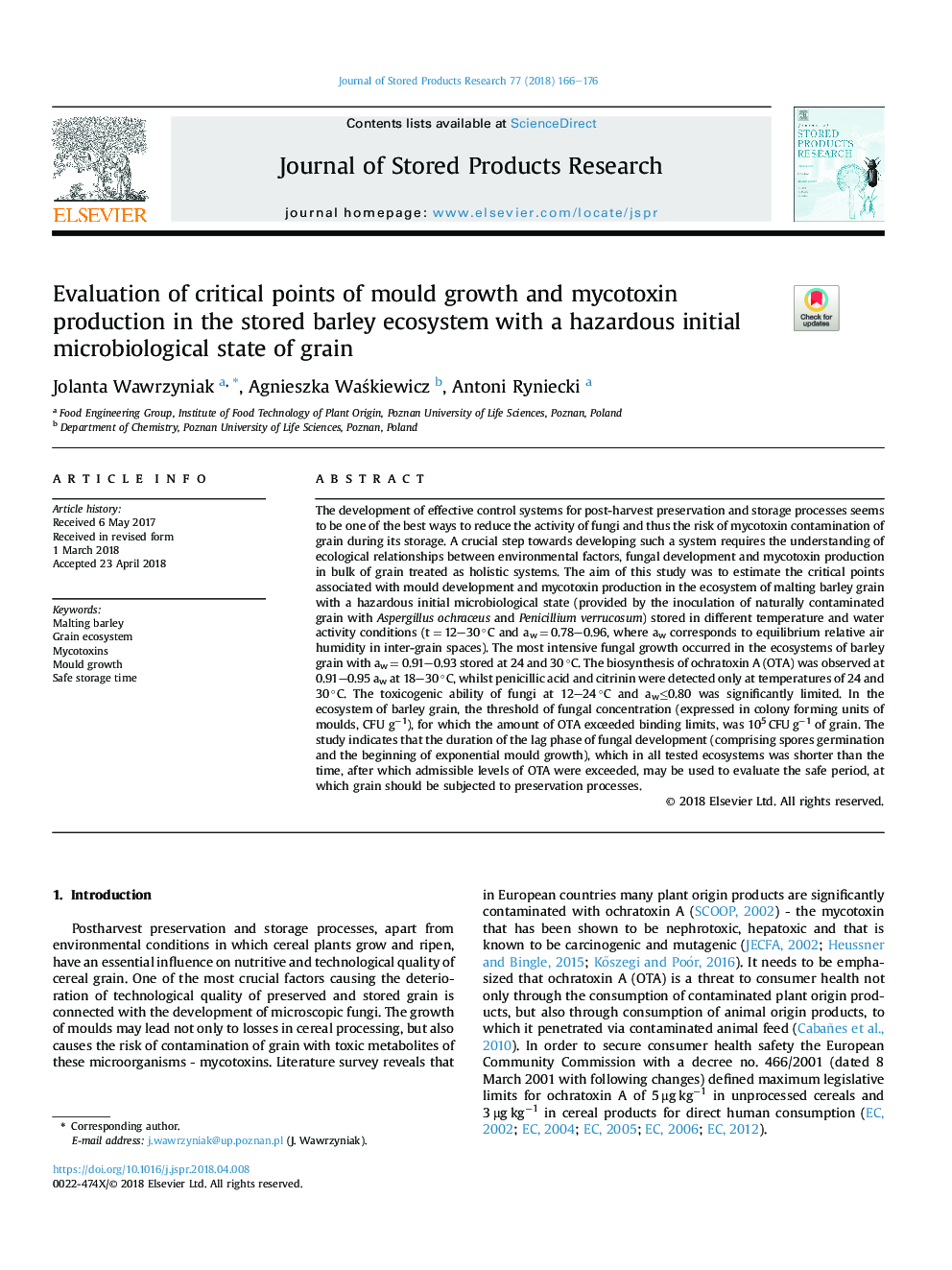| Article ID | Journal | Published Year | Pages | File Type |
|---|---|---|---|---|
| 8881656 | Journal of Stored Products Research | 2018 | 11 Pages |
Abstract
The development of effective control systems for post-harvest preservation and storage processes seems to be one of the best ways to reduce the activity of fungi and thus the risk of mycotoxin contamination of grain during its storage. A crucial step towards developing such a system requires the understanding of ecological relationships between environmental factors, fungal development and mycotoxin production in bulk of grain treated as holistic systems. The aim of this study was to estimate the critical points associated with mould development and mycotoxin production in the ecosystem of malting barley grain with a hazardous initial microbiological state (provided by the inoculation of naturally contaminated grain with Aspergillus ochraceus and Penicillium verrucosum) stored in different temperature and water activity conditions (tâ¯=â¯12-30â¯Â°C and awâ¯=â¯0.78-0.96, where aw corresponds to equilibrium relative air humidity in inter-grain spaces). The most intensive fungal growth occurred in the ecosystems of barley grain with awâ¯=â¯0.91-0.93 stored at 24 and 30â¯Â°C. The biosynthesis of ochratoxin A (OTA) was observed at 0.91-0.95 aw at 18-30â¯Â°C, whilst penicillic acid and citrinin were detected only at temperatures of 24 and 30â¯Â°C. The toxicogenic ability of fungi at 12-24â¯Â°C and awâ¤0.80 was significantly limited. In the ecosystem of barley grain, the threshold of fungal concentration (expressed in colony forming units of moulds, CFU gâ1), for which the amount of OTA exceeded binding limits, was 105â¯CFUâ¯gâ1 of grain. The study indicates that the duration of the lag phase of fungal development (comprising spores germination and the beginning of exponential mould growth), which in all tested ecosystems was shorter than the time, after which admissible levels of OTA were exceeded, may be used to evaluate the safe period, at which grain should be subjected to preservation processes.
Keywords
Related Topics
Life Sciences
Agricultural and Biological Sciences
Agronomy and Crop Science
Authors
Jolanta Wawrzyniak, Agnieszka WaÅkiewicz, Antoni Ryniecki,
